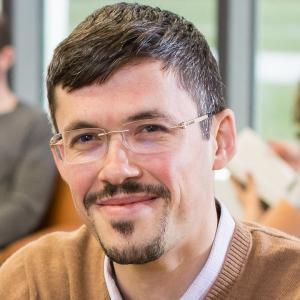
By the Numbers

It used to be that a degree in statistics and probability led to a career as a statistician or an actuary — someone who makes a living measuring and managing risk and uncertainty. And while that’s still true, a whole host of other industries and fields are now clamoring for individuals with a background in statistics and applied mathematics.
The ability to manipulate data and analyze trends has become a valuable skillset in nearly every corner of modern society.
Attesting to that fact, UC Santa Barbara students have flocked to the Department of Statistics and Applied Probability over the past decade. The number of PSTAT majors has more than tripled in the past six years, increasing from 361 in the 2012-13 academic year to 1,252 in 2018-19, and well over 1,300 today. Department chair and Professor Mike Ludkovski believes a confluence of factors have led to this wellspring of interest.
The PSTAT department offers three majors: actuarial science, statistics and data science, and financial mathematics and statistics. Each one has grown in the past decade.
The actuarial science program in particular has stood out for many years. It’s a flagship program — consistently ranked in the top 10 in the nation — and the only one in the entire state that offers a bachelor of science degree in the subject. In fact, the department receives a huge number of students transferring from other universities specifically for this program.
“The whole state is a feeder for us,” Ludkovski remarked.
In addition to the distinguished faculty and comprehensive course offerings, actuarial students benefit from tailored career counseling, a large alumni network and an active student club mentored by the faculty. The many corporate relationships established over the years sponsor capstone projects, host information sessions and comprise an industry advisory board.
The department has also seen a surging interest in the statistics and data science major.
“For multiple reasons, statistics is the department on campus picking up that extra interest, at least in terms of the undergraduate population,” Ludkovski said. Students at UC Santa Barbara can take two paths to pursue big data and machine learning: major in computer science or study statistics and applied mathematics. PSTAT has seen its ranks swell with the growing demand.
The department has also begun placing a greater emphasis on hands-on data analytics in many of its courses, as the topic has become a key area of opportunity and innovation. “These are not just esoteric, theoretical constructs,” Ludkovski said. “These are tools that turn out to be extremely helpful in every walk of life.”
As students who may previously have studied business shift into harder sciences, the financial math and statistics program has expanded as well. A growing national emphasis on STEM, and an increase in STEM-interested international students, have also played a role.
To meet the growing demand, the department has added six new undergraduate courses and several graduate ones over the past five years. It is also bringing on new faculty and lecturers. In 2012, PSTAT had 11 full faculty members. Now there are 17, and Ludkovski anticipates the addition of four more in the coming year. “This growth is absolutely necessary,” he said, explaining that the number of adjunct professors and lecturers has seen a similar increase, and the number of TAs has more than doubled in the past six years.
There’s also discussion across campus of creating an interdepartmental data science major. The topic is still in its early phases, but the PSTAT department will have a strong presence in whatever program comes to be.
Ludkovski does not expect this explosion of PSTAT majors to continue unabated. “If you try to extrapolate into the future, you hit the whole campus in five years,” he said. “So it has to plateau.” The leveling off will give the department a welcome chance to catch up with the exploding interest and prepare for the decade ahead.



